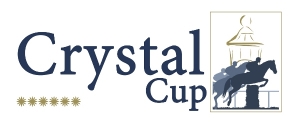The pace of change can be infinitesimally slow in horseracing’s conservative circles. Purists of the sport are often able to articulate their views to retain the status quo and hinder progress. This manifests itself in the example of Cheltenham’s cross country races, introduced to a previous generation of spectators in 1995, 30 years ago. Yet still, there are sceptics among the UK racing fraternity who say the race has no place in Cheltenham’s calendar, let alone gracing the Festival.
And looking back at the opening contests – all handicaps – there was some merit in those arguments. Unlike in France, where the genre is well established and widespread, the isolated incidence at Cheltenham made the race vulnerable, especially when the opening winner Macgregor The Third, was little more than a modest handicapper, the runner-up a former eventer.
It took a multiple winner and former highly-rated horse in Spotthedifference to put the race on the map. Trained by innovator and forward-thinking Kim Bailey, the horse was also conveniently owned by race sponsor Compton Hellyer, then Chairman of sponsor Sporting Index.
Ironically the current sponsor was also among the sceptics of the genre. Glenfarclas, fifteen years ago a niche trade brand of malt whisky, was being advised by the late Charles Hamer, a Jumps purist whose family donated the National Hunt Challenge Cup to the Festival, and who worked for distributor Pol Roger. Charles was interested in investing in Point-to-Point racing, but swallowed his pride and disdain for the race to understand that two niche brands could complement each other, especially with network TV coverage which was missing in the amateur code. This most longstanding sponsorship is now 17 years old, and Charles’ legacy has been well adopted by brand owner John Grant.
In the early years, long before the invention of the Crystal Cup, international runners were more frequent, in part where runners from Czechia and France were well handicapped against their peer group in the UK and Ireland. Latterly however, the Cheltenham races have grown in stature, not least as part of a preparation not so much for the Festival as for the Grand National, and in some respects at least, this has focused international competition for the time being from Ireland rather than the continent.
It’s an irony that at the same time that Cheltenham’s cross country races have prospered, Ireland’s have waned in importance. Handicappers of the quality of Risk of Thunder, multiple winner of the la Touche each April, are harder to find at Punchestown, although the 2023 winner Vital Island, a runner 2 weeks ago, is rated over 130.
Even the sceptics would be hard pressed to criticize the quality of the most recent renewal of the Crystal Cup stage at Cheltenham’s Christmas fixture, which featured three Grade I winners, where a winner of the Aintree Foxhunters beat a former Gold Cup winner. The quality of runner in the only conditions race for this genre of race in the UK in March is even higher, even if this means the race is ironically less competitive as the autumn’s handicappers are poorly treated against those that have been running sometimes in graded company.
But the acceptance by trainers of high calibre horses seeking graded success means also that after 30 years, the cross country must surely have found its place. For the sceptics, it’s time to put up or shut up.
